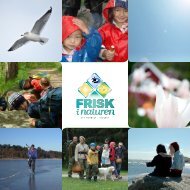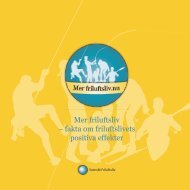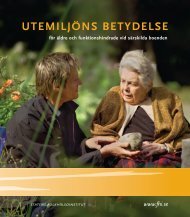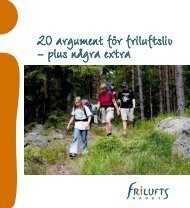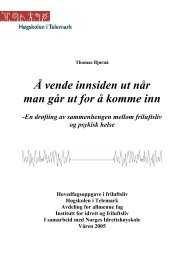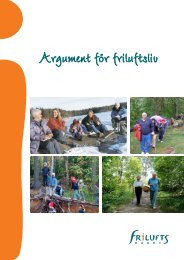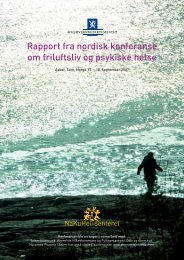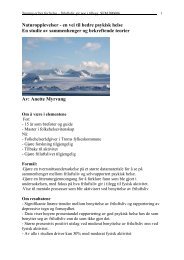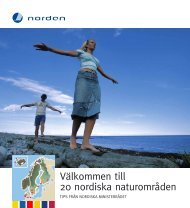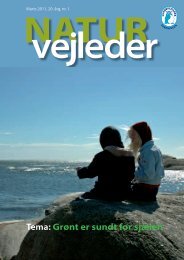Green Care: A Conceptual Framework - Frisk i naturen
Green Care: A Conceptual Framework - Frisk i naturen
Green Care: A Conceptual Framework - Frisk i naturen
You also want an ePaper? Increase the reach of your titles
YUMPU automatically turns print PDFs into web optimized ePapers that Google loves.
have a working knowledge of both horticulture and the ‘care’ of vulnerable<br />
people. Whilst the therapist may listen to clients’ difficulties and problems<br />
and help them to talk through such issues (offering advice as appropriate),<br />
formal psychotherapy or counselling is not usually part of their role.<br />
However, in specific circumstances the natural environment can serve as an<br />
ideal ‘consulting room’, free from the constraints and inhibitions imposed<br />
by being indoors. This is the approach taken by Sonja Linden and Jenny<br />
Grut (2002) in their work with the Medical Foundation for the <strong>Care</strong> of<br />
Victims of Torture.<br />
“Through gardening and contact with nature, the Natural<br />
Growth Project seeks to help refugee torture survivors<br />
put down roots in the host community, both literally and<br />
metaphorically. It is aimed primarily at those clients of the<br />
Medical Foundation whom a natural setting may help to<br />
engage in the therapeutic process and who otherwise may<br />
find this difficult.” (Linden and Grut, p. 33)<br />
<strong>Care</strong> farming is a much more diverse activity and the role of therapist is<br />
generally separate from that of farm worker, although the therapist may,<br />
as part of the programme, be engaged in farming work alongside clients or<br />
patients. This arrangement is similar to the ‘star model’ for animal assisted<br />
interventions. Using this description for ecotherapy, where for example the<br />
clients or patients are undertaking canal restoration or hurdle-making, the<br />
model is triangular (the therapist and ‘trainer’ are the same person); this<br />
would normally be the same for bushcraft and wilderness therapy (where<br />
the therapist may also be a ‘guide’). The models of intervention vary across<br />
these types of green care. In some, the experience of contact with nature<br />
is the main focus; reflection about the participants’ behaviour and thinking<br />
is not specifically relevant, nor is the relationship with the therapist and its<br />
examination. In others, however (i.e. contemporary ecotherapy), purposeful<br />
reflection on thinking and behaviour patterns is formulated alongside the<br />
conservation/restoration work with nature and the confluence of the triad<br />
of client-therapist-nature is used to draw metaphorical therapeutic meaning<br />
(Burns, 2007; Burls, 2008) and can be integrated with other approaches<br />
such as CBT and solution-based therapies.<br />
34 <strong>Green</strong> <strong>Care</strong>: A <strong>Conceptual</strong> <strong>Framework</strong>



